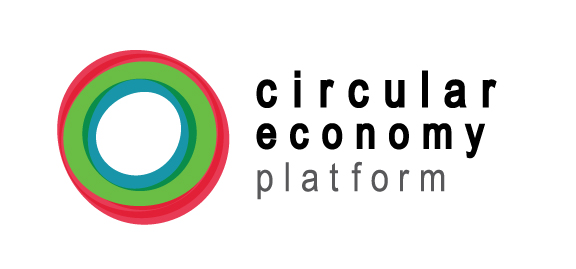- 1-434-806-2467
- Contact Us
- Member Login
- Get Listed Today
At the first annual Circular Economy Forum of the Americas (CEFA2017) in Medellin Colombia we heard many different interpretations of what the “Circular Economy” is. Indeed, in the plenary session I moderated, one presenter (Dr. Julian Kirchherr) of Utrecht University discussed the results of research showing a wide disparity in over 114 definitions of the Circular Economy.
At one level this is very important because when we converse and say specific words to each other, we need to feel confident that the receiving party has the SAME understanding of the term as the communicating party. If not, we end up thinking we’ve communicated and we’ve actually miscommunicated.
However, at this still formative stage in building awareness of what has become called Circular Economy there are a few fundamentals we can quickly agree on and not get caught up or distracted by the minutiae of competing definitions.
First and foremost, we can agree on the fundamental paradigm shift we have to make in our mental model of how the global economic system is set up and operates.
This is the shift from a linear flow of goods and services to a circular (or closed curve) system where we essentially eliminate the concept of waste, emulating nature with safe flows where materials are always nutrients for the next use, powered by renewable energy (the sun).
It is the many negative impacts or unsustainable results we see from the linear system providing the driver for change. From global warming to ocean plastics, ocean acidification and so on we talk about our “consumption” being too much for the earth to sustain. (I’ll say more about this notion of consumption in another post).
We now appreciate that the current paradigm where we take materials, make products, sell them through distribution channels, use them and then dispose of them after use – either buried or burnt in a landfill or incinerator – is unsustainable given the current (and still growing) population.
This, allied with the move up Maslow’s hierarchy of needs as more people join the middle classes and strive for greater actualization of our higher selves drives more product purchases and creates more negative impacts.
So, let’s immediately agree we need to “Prefer Circular” from now on and move to take actions which will start to get us there.
Now that we’re in agreement about the paradigm change that’s needed we need to amplify this message and communicate this in all sectors, until we create an unstoppable movement.
Governments, companies, organizations and each of us individually has a role to play. We have a unique opportunity right now, to transform the lives of everyone on the planet for the better. Let’s not blow it!
Por Ken Alston
Principal Asesor, Circular Economy Platform of the Américas o (Plataforma de Economía Circular en las Américas).
En la primera reunión anual del Circular Economy Forum of the Americas (CEFA2017) en Medellín, Colombia; escuchamos varias interpretaciones sobre lo que es la “Economía Circular”. En la conferencia junto con el Dr. Julian Kirchherr de la “Utrecht University” conversamos y debatimos sobre sus investigaciones llevándonos a más de 114 definiciones acerca de la “Economía Circular”.
Estos debates son muy importantes ya que al momento de conversar sobre este tema debemos de tener la confianza de que tanto la parte que comunica como la que está recibiendo la información están entendiendo los términos. Se requiere llegar a este nivel de comunicación, sino no se estaría cumpliendo con el objetivo y los términos Y/o ideas pueden variar o desviarse.
Estando en la etapa básica de construcción de la definición de “Economía Circular” hay unos cuantos fundamentos en los cuales estamos de acuerdo o desacuerdo, de esta manera llegamos a la definición sin solo dedicarnos o distraernos a minuciosas definiciones que no van al caso.
Como paradigma central y fundamental debemos primero entender cómo funciona y opera el sistema económico global.
Esto es el cambio de una economía donde el flujo de bienes y servicios es LINEAL a un sistema CIRCULAR donde esencialmente estamos eliminando el concepto de desechos y/o basuras. De esta manera encontramos un ciclo natural y seguro donde los materiales resultantes son los nutrientes para el siguiente uso, todo este ciclo es alimentado por la energía renovable; el sol.
Queremos generar este cambio al darnos cuenta el negativo impacto que genera el sistema lineal; calentamiento global, desperdicios de plásticos y demás materiales en los océanos, contaminación de fuentes hídricas, deforestación de bosque entre muchos otros impactos negativos que causa el sistema lineal. Estaríamos hablando que nuestros consumos son mayores a los que la tierra logra producir.
en este momento tenemos como paradigma donde de la tierra obteneos materias primas, fabricamos productos, los vendemos a través de canales de distribución, los usamos y como destino final dos desechamos, el final de estos “desechos” es ser enterrados en un relleno sanitario o quemados en un incinerador. Esta corriente es insostenible teniendo en cuenta la cantidad de población que constantemente está en ascenso. Esto aliado con la corriente de ascenso de clase social propuesta por “Maslow” se entiende como las personas al llegar a un estatus económico de clase media comienzan un acelerado consumo de bienes, lo cual impulsa a comprar más productos, lo que simboliza en un futuro más desechos y más impactos negativos.
Teniendo en cuenta todo lo anterior es innegable que debemos optar por “Prefer Circular” desde ahora y tomar acciones, lo cual nos llevara hasta acá.
Ya que tenemos claro cómo debemos de cambiar el paradigma debemos de distribuir el mensaje y comunicarlo en todos los sectores implicados para que logremos un movimiento que no tenga vuelta atrás.
